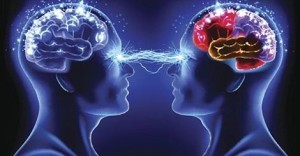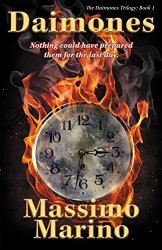Why Scientists Envision Science Fiction Even Before SF Writers
 Today’s theories and concepts are concerned largely with invisible entities: not only unseen force fields and insensible rays, but particles too small to see even with the most advanced microscopes. Theories at the speculative forefront of physics flesh out this unseen universe with parallel worlds and with mysterious entities named for their very invisibility: dark matter and dark energy.
Today’s theories and concepts are concerned largely with invisible entities: not only unseen force fields and insensible rays, but particles too small to see even with the most advanced microscopes. Theories at the speculative forefront of physics flesh out this unseen universe with parallel worlds and with mysterious entities named for their very invisibility: dark matter and dark energy.
Sure, many of edge theories sound wild, but it has beet always the case: in the light of discoveries such as X-rays and the electron, Fournier d’Albe, a respected researcher in radio telecommunications, insisted that we’d be unwise to discount something just because we can’t see it directly.
There are things that now seem to be the antithesis of science, but when science first began to fixate on invisible entities, many leading scientists saw no clear distinction between such occult concepts and hard science.
For example, if radio waves could transmit invisibly between a broadcasting device and a receiver, it should not seem so hard to imagine that human brains—which are after all quickened by electrical nerve signals—could act as receivers, with technological or chemical and genetic help.
Maxwell’s friends Peter Guthrie Tait and Balfour Stewart, both professors of physics, published The Unseen Universe (1875), in which they presented the ether—supposedly the rarefied fluid that carries Maxwell’s waves—as a bridge between the physical and spiritual worlds, both of which they considered to be populated with intelligences.
(1875), in which they presented the ether—supposedly the rarefied fluid that carries Maxwell’s waves—as a bridge between the physical and spiritual worlds, both of which they considered to be populated with intelligences.
Light exerts a “pressure” on objects, exerted by the photons—despite having no mass, (current commonly accepted physical theories imply or assume the photon to be strictly massless) photons can deliver a little kick to surfaces they strike—that pressure is a real enough phenomenon, and gave birth to solar sails spaceships in the mind of SF authors. But if a photon has no mass, how can it be trapped in a Black Hole? Provocative question, of course.
Several of the early pioneers of television were motivated by their paranormal sympathies, and John Logie Baird, usually regarded as the device’s real inventor, believed he was in spiritualistic contact with the departed spirit of Thomas Edison.
It might have seemed natural and harmless enough to refer to the double images of early television sets, caused by poor reception or bad synchronization of the electron beam, as “ghosts”—but this terminology spoke to, and fed, a common suspicion that the figures you saw on the screen might not always correspond to real people.
And what about theories of Alternative Universes, versions of us in these many replica worlds—they are all in some sense us, but there’s no prescription for where to put our apparently unique consciousness. This conundrum arises not (as some adherents insist) as an inevitable result of “taking the math seriously,” but simply because of the impulse, motivated by neither experiment nor theory, to make each formal mathematical expression a complete world of its own, invisible from this one.
It seems quite possible that dark energy, and perhaps dark matter too, will turn out to be like Crookes’ “dark space” and “radiant energy”: not exactly stuff, but symptoms of some hitherto unknown physical principle. These connections were exquisitely intuited by Philip Pullman in the His Dark Materials Trilogy , where (the title alone gives a clue) a mysterious substance called Dust is an amalgam of dark matter and Barrett’s quasi-sentient psychomeres, given a spiritual interpretation by the scientist-priests of Pullman’s alternative steampunk Oxford University who sense its presence using instruments evidently based on Crookes’ light mill.
, where (the title alone gives a clue) a mysterious substance called Dust is an amalgam of dark matter and Barrett’s quasi-sentient psychomeres, given a spiritual interpretation by the scientist-priests of Pullman’s alternative steampunk Oxford University who sense its presence using instruments evidently based on Crookes’ light mill.
Extracted from an original article by Philip Ball in Nautil.us
Massimo Marino is a scientist envisioning science fiction. He spent years at CERN and The Lawrence Berkeley Lab followed by lead positions with Apple, Inc. and the World Economic Forum. He is also co-founder of “Squares on Blue”, a Big Data Analytics service company, and of BookGarage, a publishing service brokerage company.
Massimo currently lives in France and crosses the border with Switzerland multiple times daily, although he is no smuggler. #SFWApro
As a scientist writing science fiction, he went from smashing particles at accelerators at SLAC and CERN to smashing words on a computer screen. He is is now an author with Booktrope Publishing, LCC, and Active Member of SFWA – Science Fiction & Fantasy Writers of America.
smashing particles at accelerators at SLAC and CERN to smashing words on a computer screen. He is is now an author with Booktrope Publishing, LCC, and Active Member of SFWA – Science Fiction & Fantasy Writers of America.
He’s the author of multi-awarded Daimones Trilogy. The 1st volume, Daimones (The Daimones Trilogy Book 1) , published by Booktrope is available since August 2015.
, published by Booktrope is available since August 2015. 
 His novels have received the Seal of Excellency from both AwesomeIndies.net and IndiePENdents.org
His novels have received the Seal of Excellency from both AwesomeIndies.net and IndiePENdents.org
• 2012 PRG Reviewer’s Choice Award Winner in Science Fiction
• 2013 Hall of Fame – Best in Science Fiction, Quality Reads UK Book Club
• 2013 PRG Reviewer’s Choice Award Winner in Science Fiction Series
• 2014 Finalist – Science Fiction – Indie Excellence Awards L.A.
• 2014 Award Winner – Science Fiction Honorable Mention – Readers’ Favorite Annual Awards
His novels are available from Amazon, Barnes & Noble (Nook), iTunes Apple Store, and many other retailers around the world.
Join his mailing list for new releases, or follow him on Facebook, Google+, and Twitter.
The post Why Scientists Envision Science Fiction Even Before SF Writers appeared first on § A Scientist Envisioning Science Fiction.




